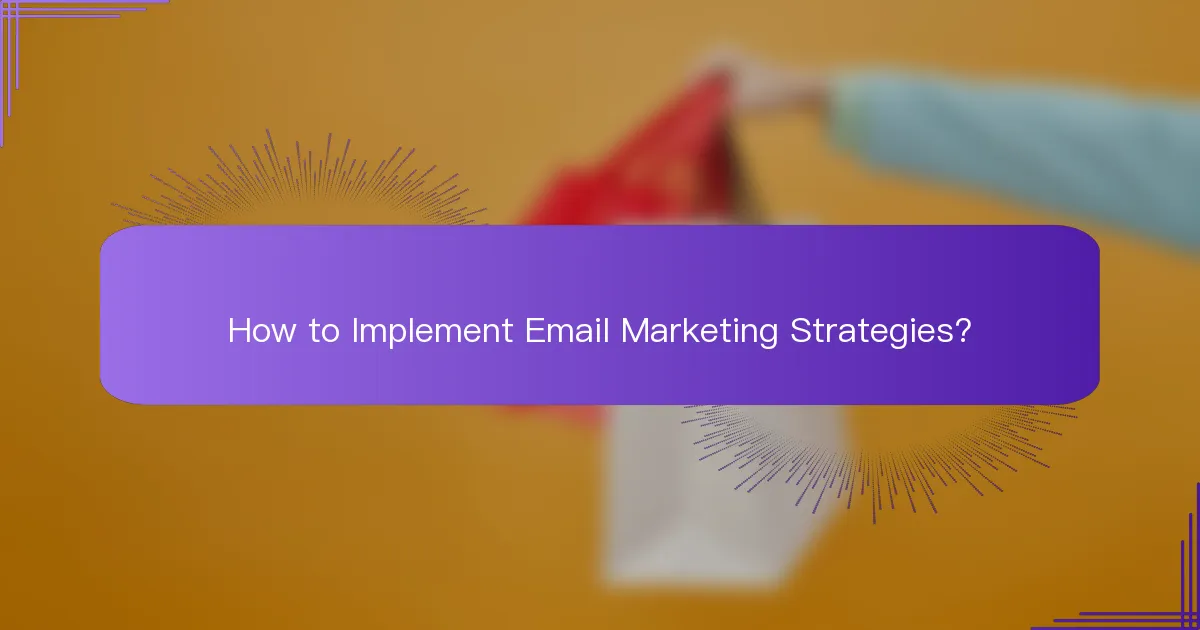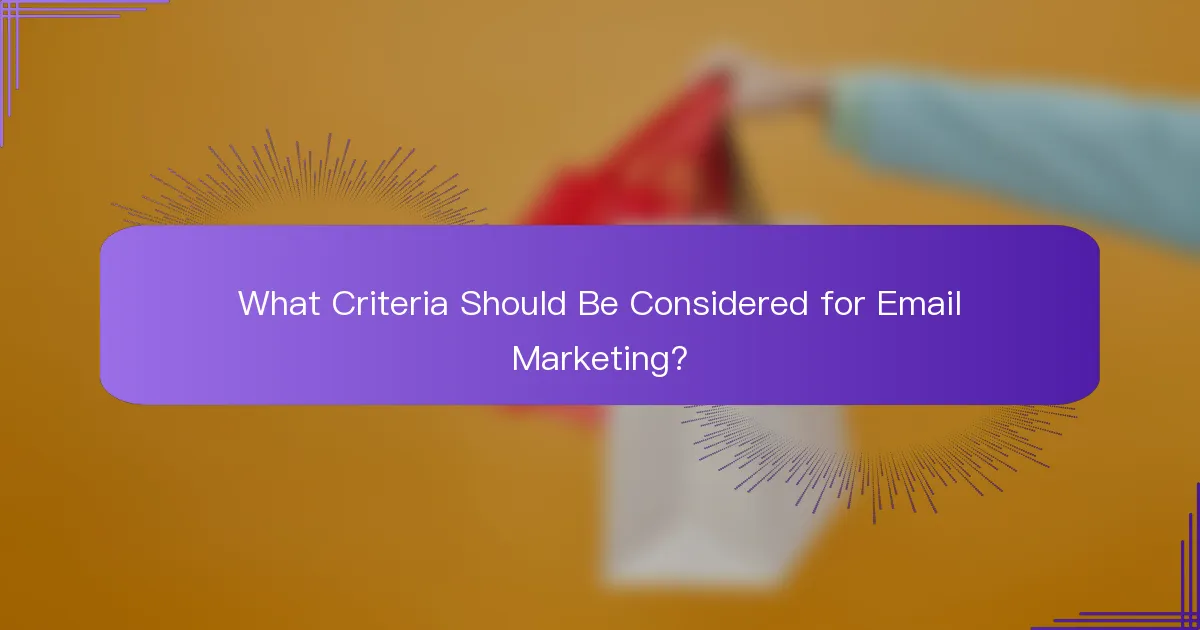In the competitive landscape of the United States, effective promotion tactics such as cross-promotion and email marketing can significantly enhance brand visibility and customer engagement. By leveraging partnerships through cross-promotion, businesses can tap into shared audiences, while targeted email marketing strategies help maintain direct communication and drive sales. Implementing these tactics thoughtfully can lead to mutual growth and stronger customer relationships.

What Are Effective Cross-Promotion Tactics in the United States?
Effective cross-promotion tactics in the United States involve collaborative marketing strategies that leverage partnerships to reach broader audiences. These tactics can enhance brand visibility and drive customer engagement through shared resources and mutual benefits.
Social Media Collaborations
Social media collaborations involve partnering with other brands or creators to co-create content or campaigns. This can include joint giveaways, live events, or shared posts that highlight both parties. By tapping into each other’s follower base, brands can significantly increase their reach.
When planning a collaboration, ensure that both brands have a similar target audience to maximise engagement. Use platforms like Instagram or TikTok for visually appealing campaigns, and consider scheduling posts for peak engagement times.
Influencer Partnerships
Influencer partnerships involve working with individuals who have a significant following to promote products or services. These influencers can create authentic content that resonates with their audience, making it a powerful promotional tactic. Choose influencers whose values align with your brand for the best results.
Consider offering influencers free products or commission-based incentives to encourage genuine promotion. Track the performance of these partnerships through unique discount codes or affiliate links to measure ROI effectively.
Content Sharing Agreements
Content sharing agreements allow brands to exchange valuable content, such as blog posts or videos, to benefit from each other’s audience. This tactic can enhance SEO and drive traffic to both websites. Ensure the content is relevant and provides value to both audiences to maintain engagement.
Establish clear guidelines on how the content will be shared and attributed. Regularly review the performance of shared content to adjust strategies as needed for better results.
Joint Webinars
Joint webinars are live online events where two or more brands collaborate to provide valuable information to their audiences. This tactic not only showcases expertise but also allows for audience engagement through Q&A sessions. Promote the webinar across both brands’ channels to maximise attendance.
Choose topics that are relevant to both audiences and provide actionable insights. Follow up with attendees post-webinar to nurture leads and encourage further engagement.
Affiliate Marketing Programs
Affiliate marketing programs enable brands to partner with affiliates who promote their products in exchange for a commission on sales. This performance-based approach can drive significant traffic and conversions without upfront costs. Select affiliates whose audiences align with your target market for optimal results.
Set clear terms for commission rates and payment structures to attract quality affiliates. Regularly evaluate the performance of your affiliates and provide them with marketing materials to enhance their promotional efforts.

How to Implement Email Marketing Strategies?
Email marketing strategies can effectively engage customers and drive sales when executed properly. Focus on building targeted lists, creating personalised content, and analysing performance to optimise your campaigns.
Segmentation of Email Lists
Segmentation involves dividing your email list into smaller groups based on specific criteria such as demographics, purchase history, or engagement levels. This allows for more tailored messaging that resonates with each audience segment.
Common segmentation strategies include targeting by age, location, or past buying behaviour. For instance, you might send different promotions to first-time buyers versus loyal customers to enhance relevance and response rates.
Personalised Content
Personalised content refers to customising emails to reflect the interests and behaviours of individual recipients. This can include using their names, recommending products based on past purchases, or sending birthday discounts.
Studies show that personalised emails can significantly increase open and click-through rates. Aim to make your content feel unique to each recipient, which can foster a stronger connection and encourage conversions.
A/B Testing for Campaigns
A/B testing, or split testing, involves sending two variations of an email to a small segment of your list to determine which performs better. This can include testing different subject lines, layouts, or calls to action.
Implement A/B testing regularly to refine your email marketing strategies. Even small changes can lead to improved engagement, so consider testing one element at a time for clearer insights.
Automated Email Sequences
Automated email sequences are pre-scheduled emails that are sent based on specific triggers, such as a new subscriber signing up or a cart abandonment. This ensures timely communication without requiring constant manual effort.
For example, a welcome series for new subscribers can introduce your brand and encourage initial purchases. Automating these sequences can save time and maintain consistent engagement with your audience.
Performance Analytics
Performance analytics involves tracking key metrics such as open rates, click-through rates, and conversion rates to evaluate the effectiveness of your email campaigns. This data helps identify what works and what needs improvement.
Utilise tools like Google Analytics or email marketing platforms that provide detailed reporting. Regularly reviewing these metrics allows you to adjust your strategies and improve overall campaign performance over time.

What Are the Benefits of Cross-Promotion?
Cross-promotion offers significant advantages for brands looking to expand their reach and enhance marketing efforts. By collaborating with complementary businesses, companies can leverage shared audiences and resources to achieve mutual growth.
Increased Brand Exposure
Cross-promotion allows brands to tap into each other’s customer bases, significantly increasing visibility. For example, a fitness apparel brand partnering with a local gym can showcase products directly to gym members, leading to heightened awareness.
This strategy not only broadens brand recognition but also reinforces the brand’s presence in the market. The more touchpoints a brand has with potential customers, the more likely they are to remember it when making purchasing decisions.
Cost-Effective Marketing
One of the most appealing aspects of cross-promotion is its cost-effectiveness. By sharing marketing costs, businesses can achieve more impactful campaigns without straining their budgets. For instance, two brands might co-host an event, splitting expenses while maximising outreach.
This approach often results in higher returns on investment compared to traditional advertising methods. Brands can allocate saved funds to other marketing initiatives, further enhancing overall strategy.
Access to New Audiences
Cross-promotion provides a unique opportunity to reach new audiences that may not have been accessible otherwise. By partnering with a brand that has a different but complementary target market, businesses can introduce their products or services to potential customers.
For example, a skincare line collaborating with a beauty influencer can gain exposure to the influencer’s followers, who may be interested in skincare products. This access can lead to increased sales and brand loyalty.
Enhanced Customer Trust
When brands collaborate, they can benefit from the established trust that each has built with their respective audiences. Customers are more likely to try a new product if it comes recommended by a brand they already trust.
For instance, if a well-known coffee shop partners with a local bakery, customers may feel more confident trying the bakery’s goods due to the coffee shop’s endorsement. This trust can translate into higher conversion rates and customer retention.

What Criteria Should Be Considered for Email Marketing?
Effective email marketing hinges on several key criteria that ensure your messages resonate with recipients and drive engagement. Considerations include understanding your target audience, ensuring content relevance, and optimising timing and frequency of your emails.
Target Audience Analysis
Understanding your target audience is crucial for successful email marketing. Analyse demographics, interests, and behaviours to tailor your messaging effectively. Use tools like surveys and analytics to gather insights about your audience’s preferences.
Segment your audience based on criteria such as age, location, and purchasing habits. This allows you to send personalised content that speaks directly to each group, increasing the likelihood of engagement and conversions.
Content Relevance
Content relevance is essential for keeping your audience engaged. Ensure that your emails provide value, whether through informative articles, exclusive offers, or updates about your products or services. Align your content with the interests and needs of your audience segments.
Utilise A/B testing to determine which types of content resonate best with your audience. This could involve testing different subject lines, formats, or calls to action to see what drives higher open and click-through rates.
Timing and Frequency
Timing and frequency can significantly impact the effectiveness of your email campaigns. Research suggests that sending emails during weekdays, particularly Tuesday through Thursday, often yields better results. However, testing different days and times can help identify what works best for your specific audience.
Maintain a consistent frequency without overwhelming your subscribers. A common approach is to send emails weekly or bi-weekly, but monitor engagement metrics to adjust your schedule accordingly. Avoid sending too many emails in a short period, as this can lead to higher unsubscribe rates.

What Tools Can Enhance Cross-Promotion Efforts?
Effective cross-promotion requires the right tools to streamline collaboration and communication. Utilising social media management and email marketing platforms can significantly boost your promotional strategies and reach a wider audience.
Hootsuite for Social Media Management
Hootsuite is a powerful tool for managing social media accounts, enabling users to schedule posts, track engagement, and analyse performance across multiple platforms. By integrating cross-promotion efforts, businesses can ensure consistent messaging and maximise visibility.
To effectively use Hootsuite for cross-promotion, create a content calendar that aligns posts across different channels. This helps maintain a cohesive brand image and allows for targeted campaigns that resonate with specific audiences. Regularly review analytics to adjust strategies based on what content performs best.
Mailchimp for Email Campaigns
Mailchimp is a leading email marketing platform that allows businesses to design and send targeted email campaigns. It offers features like segmentation, automation, and analytics, making it ideal for cross-promotion initiatives.
When using Mailchimp, segment your audience based on interests or behaviours to tailor your messages effectively. Utilise A/B testing to determine which subject lines and content resonate most with recipients. Additionally, consider integrating social sharing buttons in your emails to encourage further cross-promotion across platforms.
